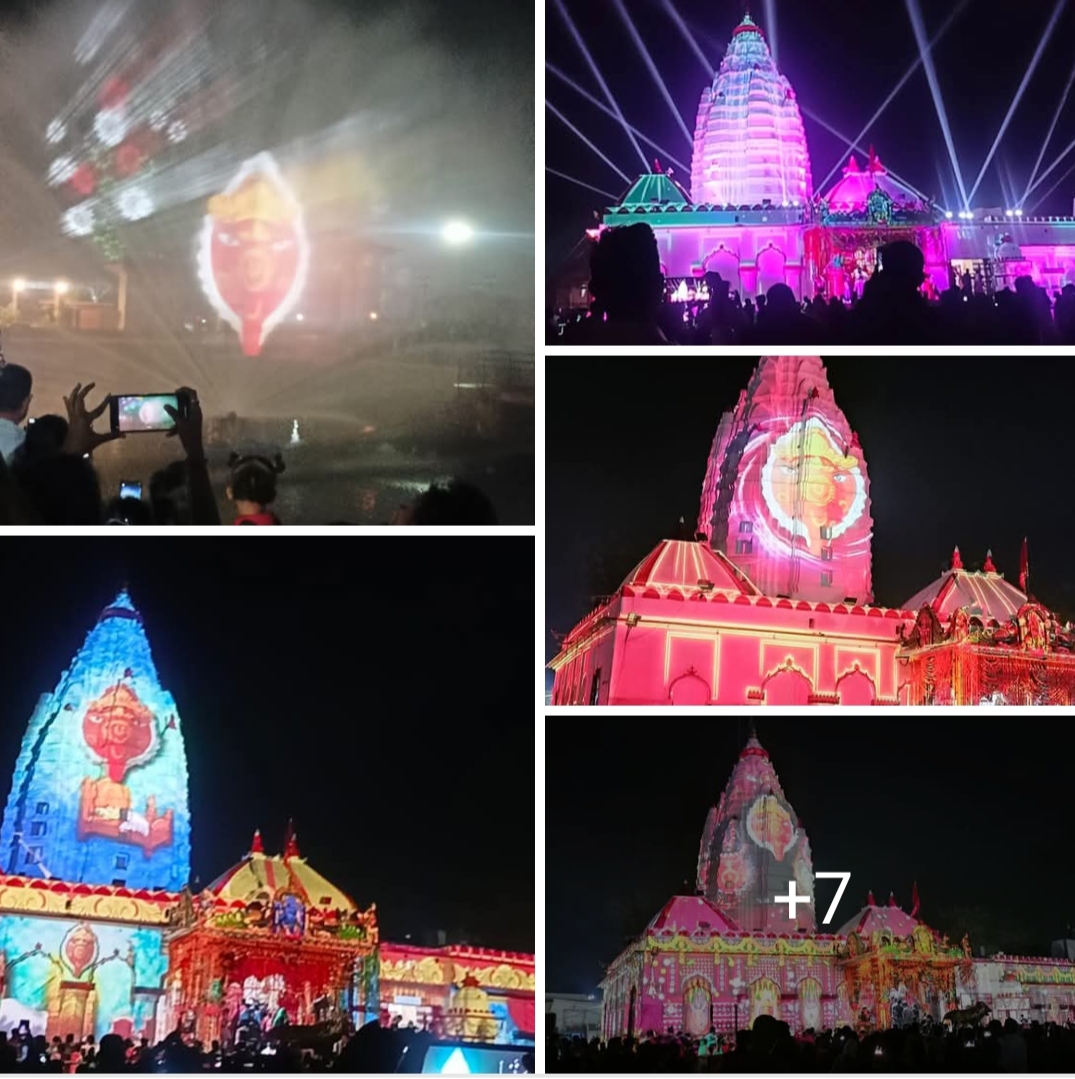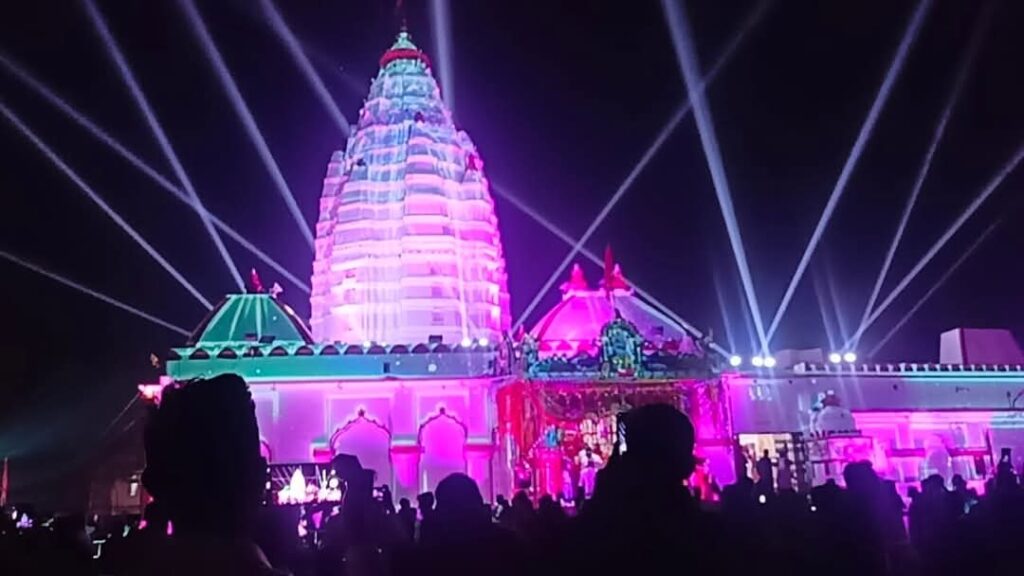
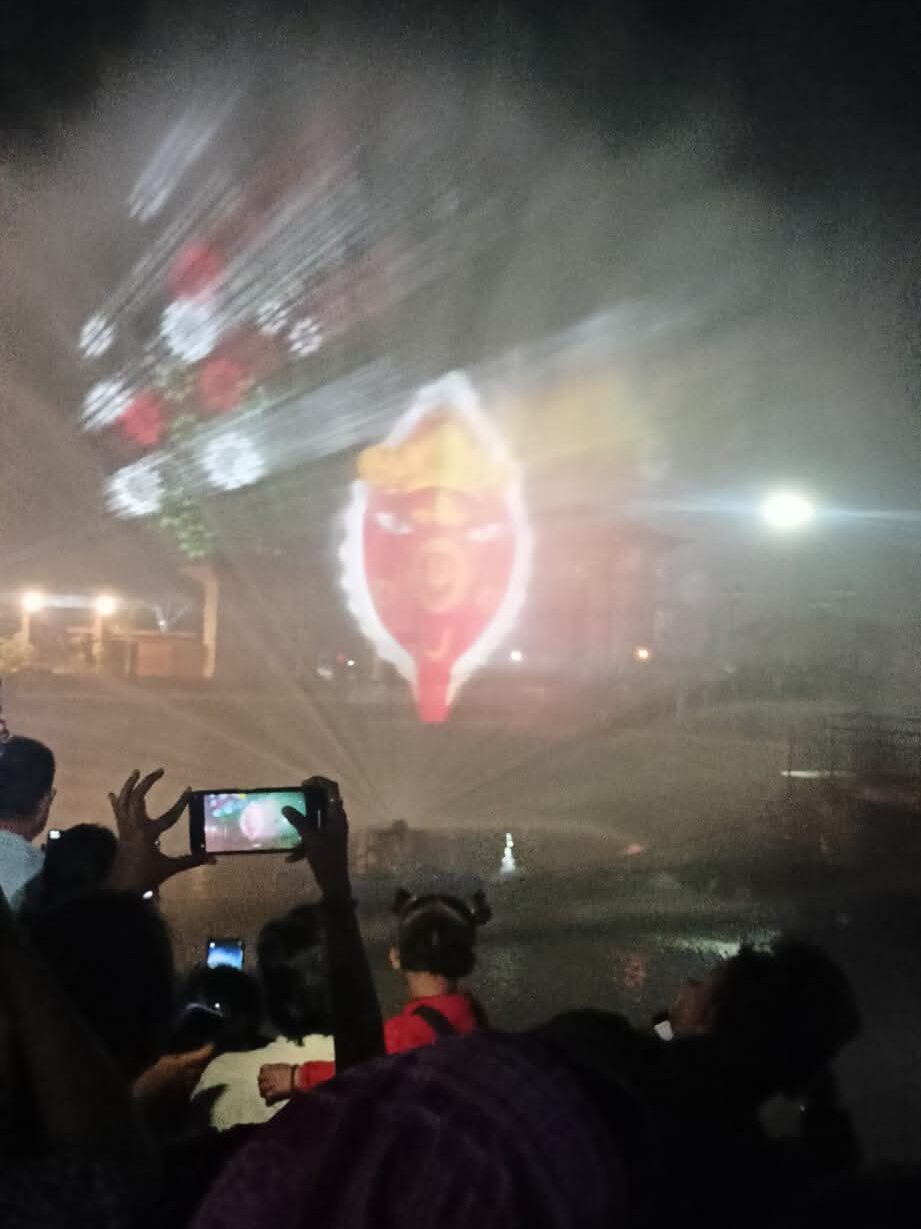
Maa Samaleswari Temple Sambalpur
Introduction
Nestled on the banks of the holy river Mahanadi in Sambalpur, western Odisha, the Samaleswari Temple is one of the most significant spiritual and cultural landmarks of the region. The presiding deity, Maa Samaleswari, affectionately called Maa Samalei by locals, is revered as the Ishta Devi (chief goddess) of western Odisha. Her temple not only serves as a sacred pilgrimage destination but also stands as a symbol of Sambalpuri heritage, regional pride, and devotion.
The temple’s history spans over a thousand years, making it an important monument of ancient and medieval Odisha. The origin of the deity is associated with tribal beliefs, Tantric worship, and the emergence of Shakti cults in Eastern India.
Origin of the Deity: Tribal Roots to Shakti Worship
The worship of Maa Samaleswari is believed to predate the formal construction of the temple. Historical records and folklore suggest that indigenous tribes of the region such as the Gonds and Binjhals worshipped a powerful female deity associated with nature and protection.
The name Samalei is believed to have been derived from “Samala”, meaning darkness or the formless divine power, which resonates with the idea of Shakti (cosmic feminine energy). Over centuries, this tribal deity was gradually assimilated into the Hindu pantheon and came to be worshipped as a form of Durga or Mahakali, symbolizing power, fertility, and protection.
Historical Construction of the Temple
The present structure of the temple was built in the 16th century during the reign of Balaram Dev I, the first Chauhan ruler of Sambalpur (a branch of the Chauhan dynasty from Patna in Bihar who migrated to western Odisha). After establishing his kingdom in Sambalpur around 1540 CE, Balaram Dev patronized the worship of Maa Samaleswari and built a grand stone temple dedicated to her.
He declared Maa Samaleswari as the royal deity (Raj Devi) of his kingdom and offered her daily rituals, sacrifices, and festivals on a grand scale. Since then, the temple has been maintained and renovated by successive rulers and local communities.
Architectural Features
The Samaleswari Temple is a fine example of Kalinga architecture, built predominantly using stone. The temple is relatively simple but majestic. It features:
- A rekha deula (tower) style sanctum with a curvilinear spire.
- An inner garbhagriha (sanctum sanctorum) where the idol of Maa Samaleswari resides.
- The deity is represented in a unique granite rock form, smeared with red vermilion, adorned with silver ornaments, and dressed in colorful sarees.
- Unlike conventional idols, the image is aniconic, which connects it to tribal and ancient Tantric traditions.
- The outer walls have minimal carvings, and the inner sanctum is dimly lit, creating a mystic ambiance.
Religious Significance and Beliefs
Maa Samaleswari is considered the Goddess of Prosperity and Protector of the Region. She is deeply embedded in the spiritual psyche of the people of western Odisha, Chhattisgarh, and parts of Madhya Pradesh.
Many devotees believe that:
- Maa Samalei protects her devotees from calamities.
- Offering animal sacrifice was once a major ritual (now discouraged or symbolic).
- Devotees offer coconuts, red cloth, bangles, vermilion, and traditional dance and songs as a part of worship.
Festivals Celebrated at the Temple
1.
Nuakhai Festival
The most important and iconic festival associated with Maa Samaleswari is Nuakhai, the agrarian festival of western Odisha. It marks the beginning of the harvest season.
- On this day, newly harvested rice is first offered to Maa Samalei before being consumed by people.
- Thousands gather at the temple to receive the blessings of the goddess.
2.
Navaratri and Dussehra
- A grand celebration is held during Durga Puja/Navaratri, where the goddess is worshipped in various forms of Shakti.
- Devotional dances like Dalkhai and Rasarkeli are performed by tribal communities.
Legends and Folklore
Several local legends are associated with Maa Samalei:
- Miraculous Protection: It is believed that during invasions or natural disasters, the goddess has saved the town and its people multiple times.
- Appearing in Dreams: Devotees often narrate stories of the goddess appearing in dreams to warn, guide, or bless them.
- Link to Tantric Practices: Some believe the temple once served as a center of Tantric rituals, as the idol has no definite form and is worshipped as an embodiment of cosmic energy.
Samaleswari Temple in Modern Times
Today, the Samaleswari Temple is:
- A major pilgrimage and tourist attraction.
- Maintained by the Samaleswari Temple Trust Board, with support from Odisha Government.
- A place where daily rituals, aratis, and annual festivals are conducted systematically.
In 2021, the Odisha Government launched the Samaleswari Temple Area Management and Local Economy Initiatives (SAMALEI) plan to beautify and develop the area surrounding the temple, improve infrastructure, and promote religious tourism.
Cultural Importance of Maa Samalei
Maa Samaleswari is more than just a deity — she is the cultural icon of Western Odisha. She is invoked in:
- Sambalpuri songs and poetry.
- Traditional dance and music.
- Rituals related to marriage, harvest, and festivals.
- Local sayings and spiritual folklore.
Light & Sound Show
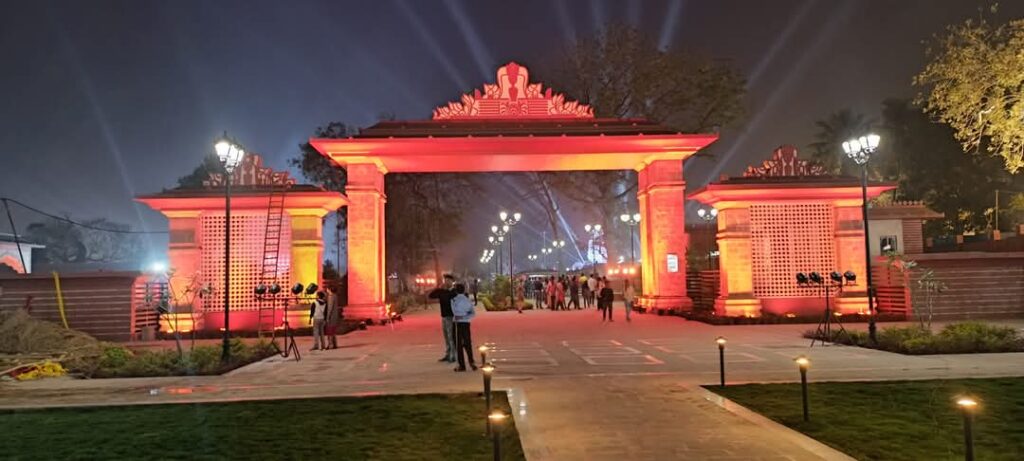
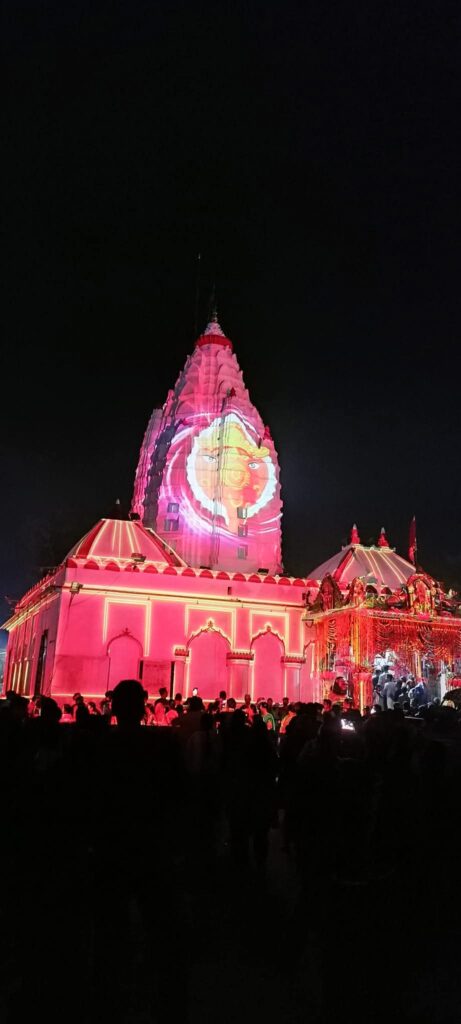
The light & sound show at Maa Samaleswari Temple is a beautifully crafted multimedia presentation that brings the history, culture, and spirit of Western Odisha to life:
🎭 What the Show Covers
Temple & Regional History
Highlights the origins of the 16th-century Samaleswari Temple, built by Chauhan King Balaram Dev, and explores key moments in Sambalpur’s past .
Legends of Maa Samaleswari
Narrates local myths and folklore surrounding the temple’s presiding goddess, giving viewers insight into her divine significance .
Rituals and Festivals
Displays major temple celebrations such as Navaratri and Nuakhai, demonstrating how these traditions shape worship practices .
Cultural Showcase
Showcases the music, poetry, dance, and heritage of Western Odisha—featuring Sambalpuri dialect elements, folk tunes, and references to historical personalities like Surendra Sai and Gangadhar Meher .
⏱ Show Format & Duration
Typically lasts around 10 minutes in the current version post-May 2025 .
Earlier versions extended to 37–40 minutes, featuring elaborate staging and narration .
🌄 Tourism and Pilgrimage
| Tourism Aspect | Details |
|---|---|
| Religious Tourism | Pilgrims from Odisha, Chhattisgarh, MP, and Jharkhand visit regularly |
| Eco-Tourism | The scenic view of Mahanadi, ghats, and river islands attracts tourists |
| Cultural Tourism | Nuakhai Festival draws international cultural enthusiasts |
| Photography | Early morning and evening shots with temple lights and river reflections |
🧺 Picnic and Leisure Activities
The Mahanadi riverbank near the temple is ideal for:
- Family picnics
- Cultural photography
- Boating during post-monsoon
- Birdwatching in winter
- Exploring nearby Deer Park, Budharaja Temple, and Ghanteswari Temple
🗺️ Tabular Overview
| Feature | Information |
|---|---|
| Location | Sambalpur, Odisha |
| Founded | Likely 16th century by King Balaram Dev |
| Deity | Maa Samaleswari (form of Shakti) |
| River | Mahanadi |
| Best Time to Visit | October to March (festivals & mild weather) |
| Famous Festivals | Nuakhai, Dussehra, Shivratri, Magha Mela |
| Timings | 5:00 AM to 9:00 PM |
| Entry Fee | Free (Donations accepted) |
| Languages Spoken | Sambalpuri, Odia, Hindi |
🚉 Accessibility and Connectivity
📍 By Road:
- Well-connected via NH-53 and NH-55
- Daily bus services from Bargarh, Bhubaneswar, Rourkela, and Raipur
🚉 By Rail:
- Sambalpur Junction is a major railway station on East Coast and South East Central Railway
- Trains from Delhi, Kolkata, Bhubaneswar, Mumbai, and Bangalore
✈️ By Air:
- Jharsuguda Airport (VSS Airport) – ~65 km away
- Regular flights to Bhubaneswar, Kolkata, Delhi
🏨 Accommodation Nearby
| Type | Examples |
|---|---|
| Luxury Hotels | Hotel Sheela Towers, The Grand SIBA |
| Mid-Range Hotels | Hotel Saket, Kaveri Hotel |
| Budget Options | Tourist lodges, homestays, Dharamshalas |
| Govt Accommodation | Panthanivas Sambalpur (OTDC) |
🧭 Suggested 1-Day Itinerary
Morning:
- Temple darshan at sunrise
- Ritual offerings, explore architecture
Afternoon:
- Walk along the Mahanadi riverfront
- Visit Deer Park or Budharaja Hill
Evening:
- Attend aarti at the temple
- Try local Sambalpuri cuisine nearby
🌱 Ecological and Cultural Harmony
Samaleswari Temple area represents a harmonious balance between devotion, ecology, and tribal heritage. The river sustains agriculture, the goddess sustains spiritual life, and the community sustains both.
The temple committee has initiated:
- Clean temple drives
- Riverbank restoration
- Promotion of local handlooms and handicrafts
🧾 Conclusion: The Eternal Flame of Devotion
The Samaleswari Temple is not just a monument; it’s the living soul of Sambalpur. Revered by kings, worshipped by commoners, and loved by millions, Maa Samaleswari is the embodiment of Odisha’s resilience, purity, and divine strength.
For those seeking spiritual depth, cultural discovery, and scenic beauty, a visit to Samaleswari Temple is a must-do experience in Western Odisha.
Visiting the temple is not just a religious journey, but also a deep dive into the rich heritage, tradition, and resilience of the people of Sambalpur and western Odisha.
Follow Our Facebook Page
Koilighughar- The Beauty of Nature
